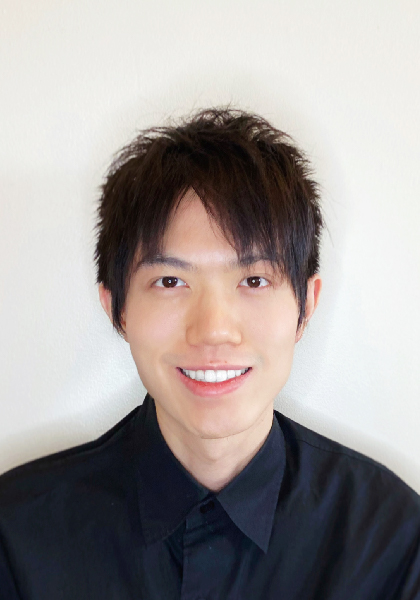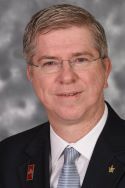Battery Division Technology Award
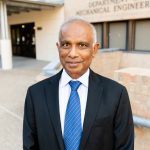
A Path Toward Sustainable Battery Technologies
by Arumugam Manthiram, University of Texas at Austin
Arumugam Manthiram is the Cockrell Family Regents Chair in Engineering, and Director of the Texas Materials Institute at the University of Texas at Austin (UT-Austin). He joined UT-Austin’s Department of Mechanical Engineering faculty in 1991 after receiving his PhD in Chemistry from the Indian Institute of Technology Madras (1981) and postdocs at the University of Oxford and UT-Austin. His research is focused on batteries and fuel cells.
Manthiram is a Fellow of The Electrochemical Society, Materials Research Society, American Ceramic Society, Royal Society of Chemistry, American Association for the Advancement of Science, and World Academy of Materials and Manufacturing Engineering. An elected member of the World Academy of Ceramics, he received the 2020 International Battery Association Research Award; 2020 ECS Henry B. Linford Award for Distinguished Teaching; 2019 Honorary Mechanical Engineer of the ME Academy of Distinguished Alumni Award; 2016 Billy and Claude R. Hocott Distinguished Centennial Engineering Research Award; 2015 Distinguished Alumnus Award of the Indian Institute of Technology Madras; 2014 ECS Battery Division Research Award; and 2012 University-wide Outstanding Graduate Teaching Award. Manthiram has been a Web of Science Highly Cited Researcher every year since 2017. He delivered the 2019 Chemistry Nobel Prize Lecture on behalf of Prof. John Goodenough.
The former chair of the ECS Battery Division and ECS Texas Section, he founded the ECS UT-Austin Student Chapter in 2006 and continues to serve as the Faculty Advisor. The author of 850 journal articles with 78,000 citations, Manthiram has an h-index of 138. He has mentored 270 students and postdoctoral researchers, including graduating 65 PhD students.
Battery Division Research Award
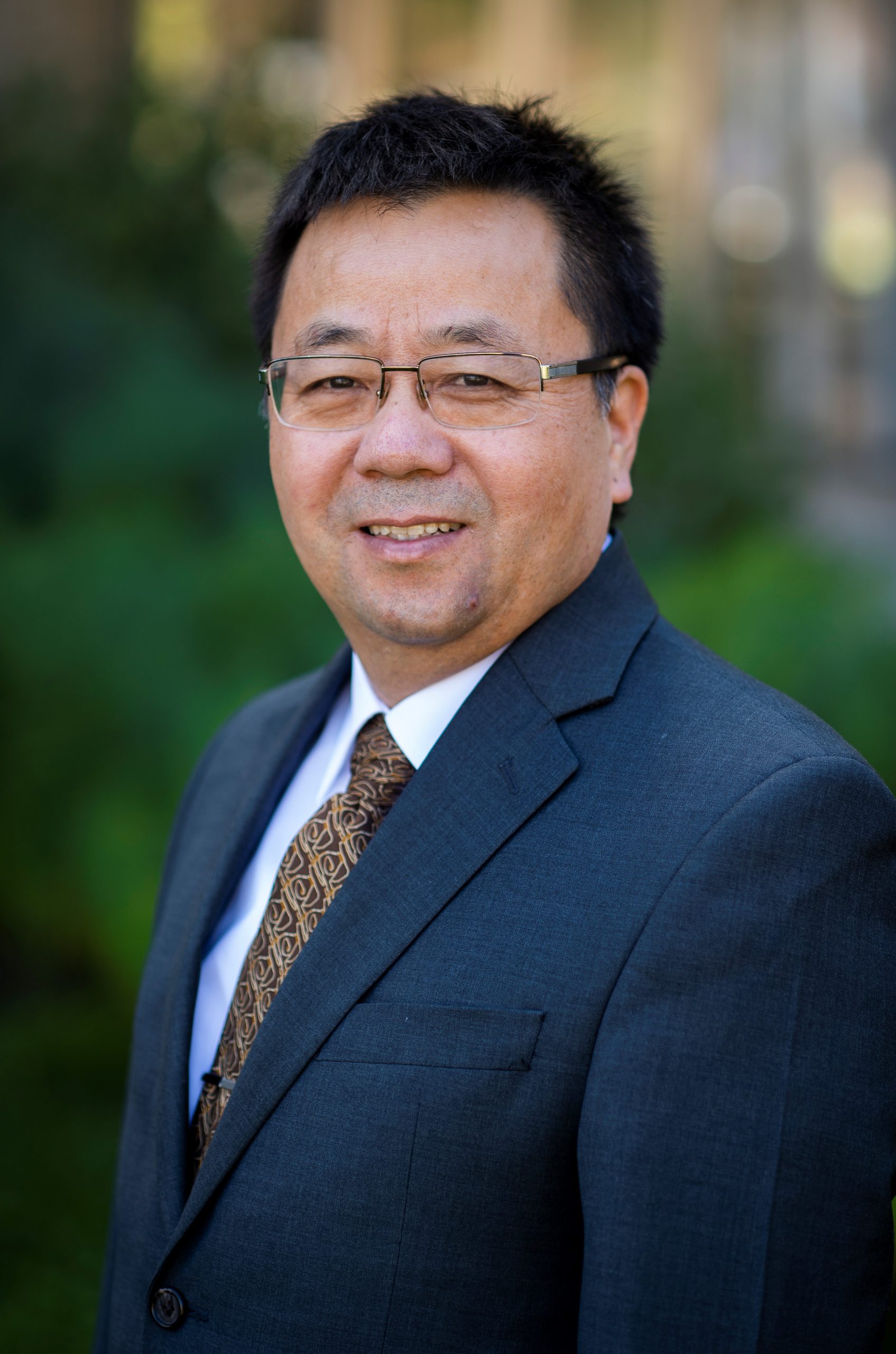
Electrolytes for High Energy Li-ion and Li Metal Batteries
by Chunsheng Wang, University of Maryland
Chunsheng Wang holds the Robert Franklin and Frances Riggs Wright Distinguished Chair in Chemical Engineering at the University of Maryland (UMD), College Park, and co-founder and Director of The UMD-ARL Center for Research in Extreme Batteries. His research interests are electroanalytical technologies, advanced materials for rechargeable batteries, fuel cells, and supercapacitors. Wang’s current research focuses on Li-ion battery electrolytes. He developed a water-in-salt electrolyte and transition metal free LiBr-LiCl-Graphite cathode for Li-ion batteries. His breakthrough research sets the foundation for new battery chemistries for years to come.
Wang completed his PhD at Zhejiang University in 1995. He has published over 300 papers and ranked as a Highly Cited Researcher by Clarivate. Wang received the 2016 and 2021 UMD Invention of the Year Awards and 2004 NASA Technology Brief Patent Application and Software Release Award. His battery technologies have been licensed by AquaLith Advanced Materials and other companies.
Battery Division Early Career Award Sponsored by Neware Technology Limited
Interplay of Chemistry and Function at the Solid Electrolyte Interphase of Lithium and Calcium Metal Anodes
by Betar Gallant, Massachusetts Institute of Technology
Betar M. Gallant is an Associate Professor and the ABS Career Development Professor in the Department of Mechanical Engineering at the Massachusetts Institute of Technology (MIT). Her research group at MIT focuses on advanced battery chemistries and materials for high-energy primary and rechargeable batteries, including fluorinated cathode conversion reactions and lithium and calcium metal anodes and their interfaces. Her group is leading research into CO2 capture and its integration with direct electrochemical conversion in the captured state.
She received SB, SM, and PhD degrees from MIT, and was a Kavli Nanoscience Institute Postdoctoral Fellow at the California Institute of Technology. She is the recipient of multiple awards including an MIT Bose Fellow; Army Research Office Young Investigator Award; Scialog Fellow in Energy Storage and in Negative Emissions Science; NSF CAREER Award; and Ruth and Joel Spira Award for Distinguished Teaching at MIT.
Battery Division Postdoctoral Associate Research Award Sponsored by MTI Corporation and the Jiang Family Foundation
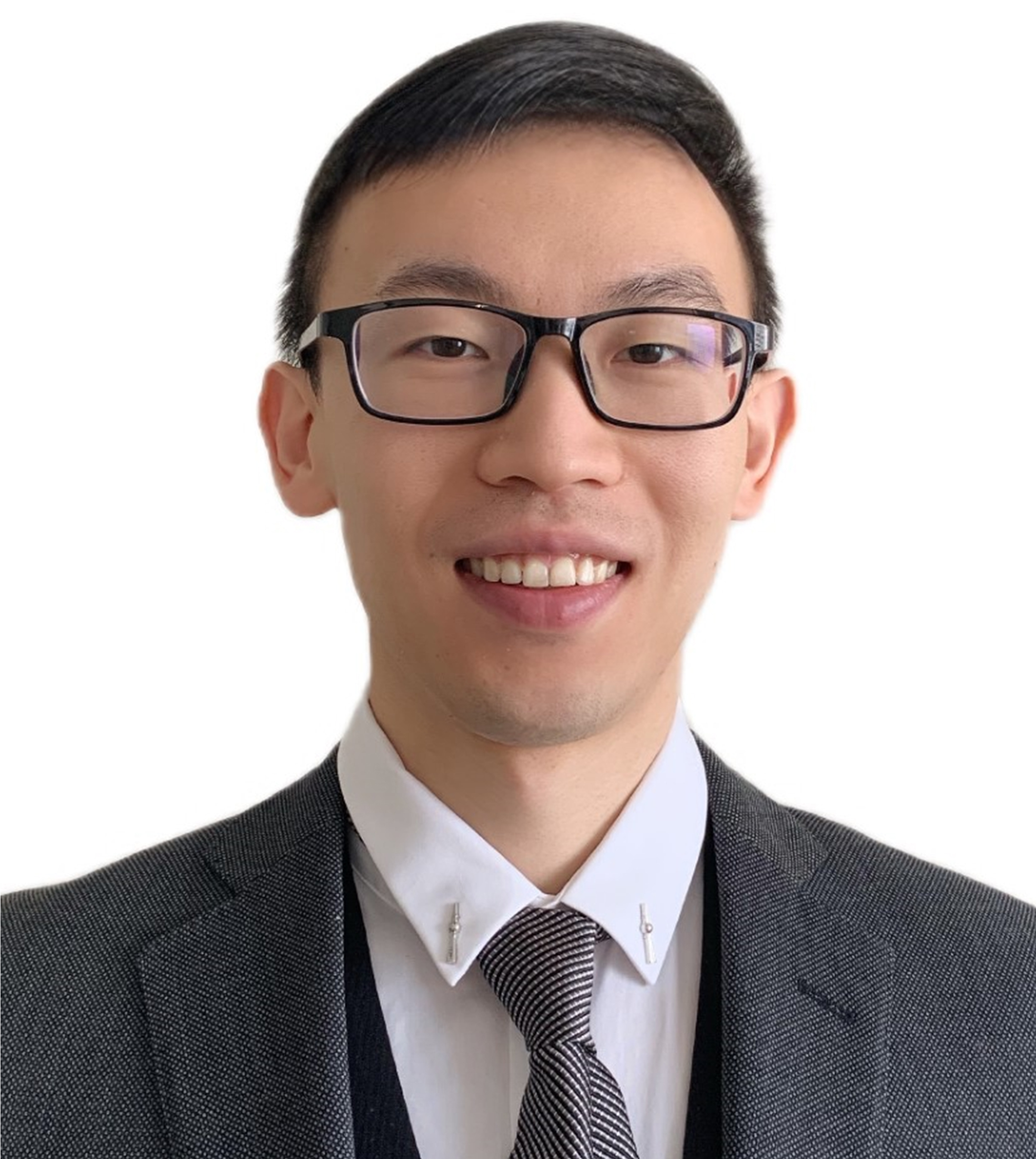 Tailoring Bulk and Interfacial Electrolyte Properties to Design Electrochemical Interphases and Enable Highly Reversible Zn Anode
Tailoring Bulk and Interfacial Electrolyte Properties to Design Electrochemical Interphases and Enable Highly Reversible Zn Anode
by Lin Ma, Unites States Army Research Laboratory
Lin Ma is a Dr. Brad. E. Forch Distinguished Postdoc Fellow at the U.S. Army Research Laboratory, University of Maryland, supervised by Dr. Kang Xu and Prof. Chunsheng Wang. His research interests focus on the use of electrochemistry and materials chemistry in clean energy technologies (mainly energy storage systems) to address energy and environmental challenges. He began his career in the energy storage field with the development of conversion cathode materials under the supervision of Prof. Yong Yang at Xiamen University, where he obtained his BSc in chemistry (2012). He earned his PhD in 2019—with support from a Killam Fellowship—working with Ma received the 2017 ECS Battery Division Student Research Award. The author and co-author of over 50 peer-reviewed journal articles, one book, and six patents, he serves as an active reviewer in the battery field for more than 50 publications including the Journal of Power Sources and ACS Energy Letters. He is an Ambassador for the 21st International Meeting on Librium Batteries (IMLB 2022).
Battery Division Postdoctoral Associate Research Award Sponsored by MTI Corporation and the Jiang Family Foundation

Advances in Understanding the Rechargeable Zinc-air Batteries Chemistry
by Wei Sun, Westfälische Wilhelms Universität Münster
Wei Sun is a postdoc researcher under the supervision of Prof. Martin Winter in the MEET Battery Research Center at the Westfälische Wilhelms-Universität Münster. His research interests are in the field of energy storage materials and electrochemistry, with a recent focus on the understanding of rechargeable zinc-based batteries chemistry. After completing a PhD in Materials Processing Engineering at the South China University of Technology in 2017, he was a Visiting Scholar in Prof. Chunsheng Wang’s group at the University of Maryland (2015-2017). He has published over 30 peer-reviewed papers in prestige journals including Science and the Journal of American Chemistry Society with a citation > 3000 and a Google Scholar h-index > 24. He is the main participant in two key research projects funded by the German Federal Ministry of Education and Research. Sun served as a judge for German-Israeli Foundation projects, as well as a reviewer for journals including Science Advances and Energy & Environmental Materials.
Battery Division Student Research Award Sponsored by Mercedes-Benz Research & Development
Towards Understanding and Controlling Bulk Anionic Redox in Li-ion Positive Electrode Materials Through Electronic Structure Tuning
by Yang Yu, Massachusetts Institute of Technology
Yang Yu is a Senior Cell Materials Engineer at Tesla. He received his PhD in Materials Science and Engineering from the Massachusetts Institute of Technology (MIT) in 2021 under the supervision of Prof. Yang Shao-Horn. As an undergraduate at Northwestern University, Yu conducted research with Prof. Chris Wolverton using density functional theory to understand the energetic and structural evolution of Li-ion battery cathode materials upon charging. Yu completed his BS summa cum laude in Materials Science and Engineering and Manufacturing and Design Engineering there in 2016. At MIT, he combined his expertise in theoretical calculations with advanced X-ray and vibration spectroscopies to understand the bulk and surface redox process of Ni-rich NMC cathodes as well as Li-excess materials. Through systematic tuning metal-oxygen interactions, he demonstrated the importance of covalency between transition metal and oxygen to maintain a reversible oxygen redox behavior, enabling future high-throughput high energy-density cathode screening.
Yu has published 21 journal articles, including nine (co-)first peer-reviewed journal articles on cathode materials in journals including Energy & Environmental Science, Chemistry of Materials, and ACS Applied Materials & Interfaces.
Battery Division Student Research Award Sponsored by Mercedes-Benz Research & Development
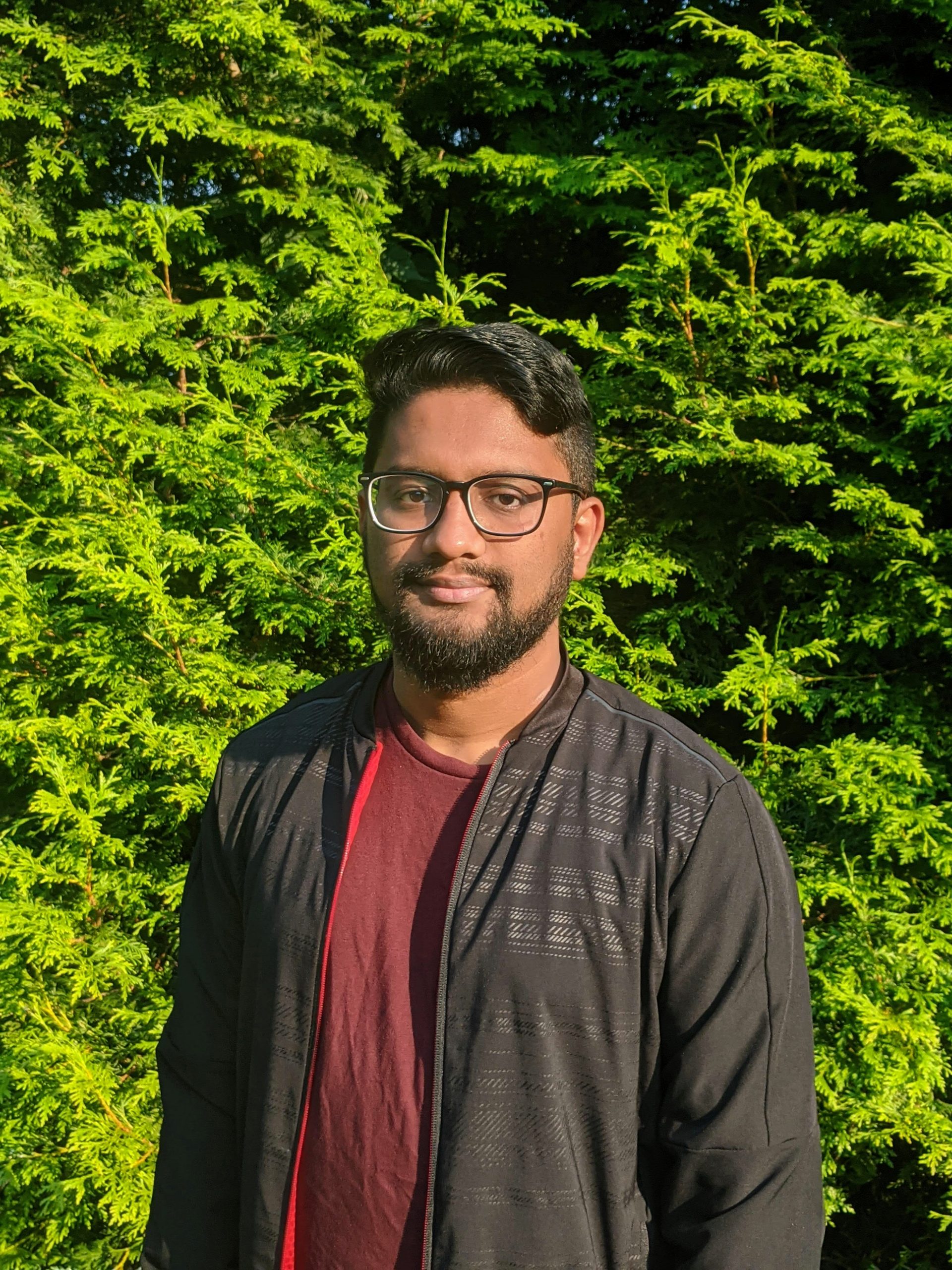
Elucidating the Surface-to-bulk Redox Chemistry and Design Principles of Stable Layered Cathode Materials
by Muhammad Mominur Rahman, Virginia Polytechnic Institute and State University
Muhammad Mominur Rahman recently completed his PhD in Chemistry under the supervision of Prof. Feng Lin at the Virginia Polytechnic Institute and State University (Virginia Tech). His graduate research focused on the design and development of layered cathode materials for alkali-ion batteries, defect dynamics in layered cathodes, advanced synchrotron characterization of electrode materials for alkali-ion batteries, multiscale electrochemistry, and understanding the solid-liquid interfaces in alkali-ion batteries. He earned his BS (2014) and MS (2016) degrees in Applied Chemistry and Chemical Engineering from the University of Dhaka.
Mominur’s research is published in journals such as Nature Communications, Energy & Environmental Science, Matter, ACS Materials Letters, and the Journal of Physical Chemistry C. His research contributions are highlighted by multiple public and scientific media such as DOE Science, ScienceDaily, Virginia Tech News, Xiamen University Malaysia News, and SLAC Science Highlights. Mominur received the 2021 ECS Battery Division Student Research Award; 2020 Chemistry Graduate Research Award; 2019 Graduate School Doctoral Assistantship Award; and 2014 Dean’s Award.
Corrosion Division Morris Cohen Graduate Student Award
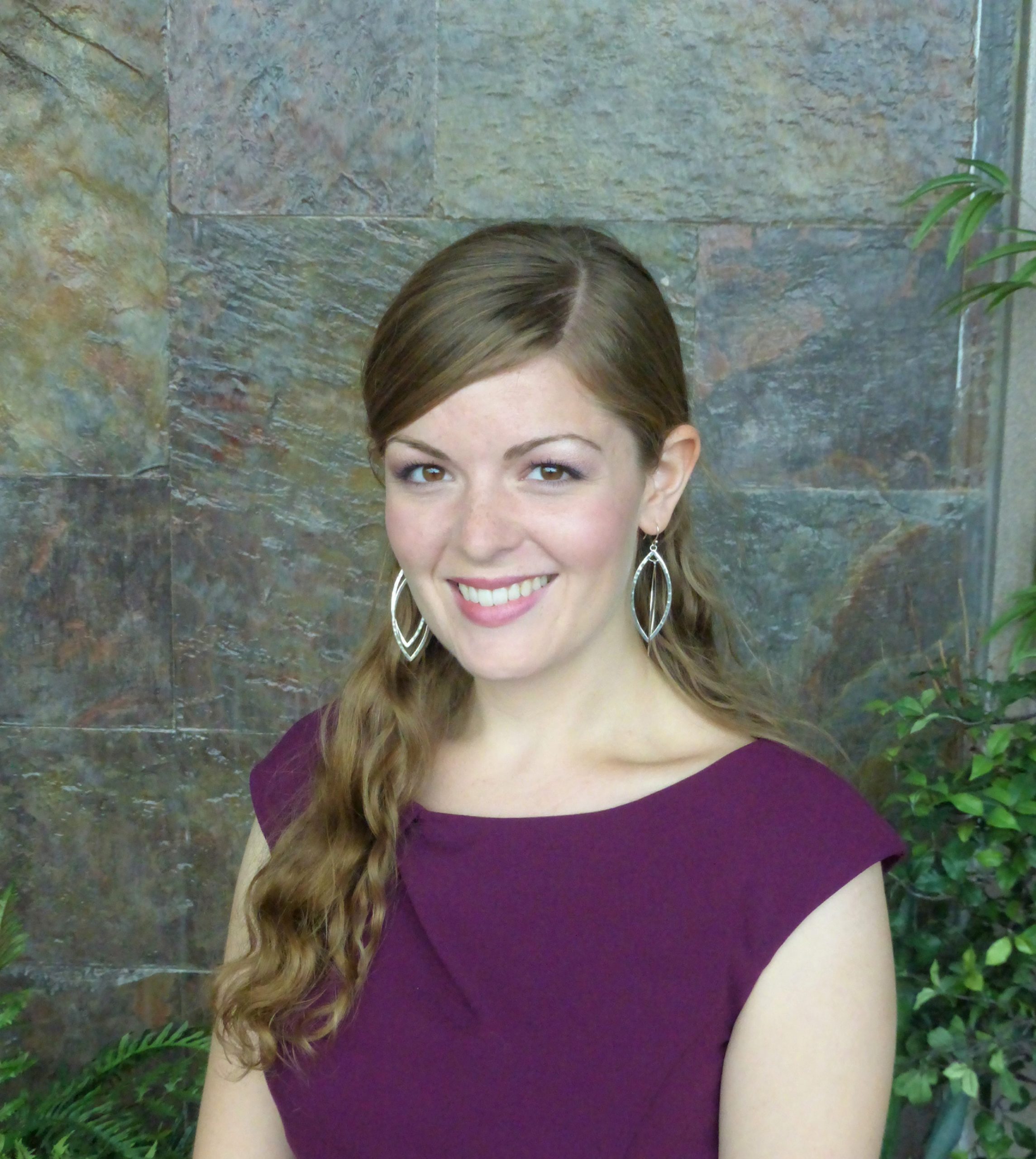
Galvanic Corrosion of Copper-Coated Carbon Steel for Used Nuclear Fuel Containers
by Thalia Standish, Western University
Thalia Standish is a Research Scientist at Surface Science Western, where she conducts material analyses to advance academic research and help solve industrial problems. She received her PhD in Chemistry from Western University in 2019. Her graduate research focused on evaluating the galvanic corrosion behavior of copper-coated carbon steel for used nuclear fuel containers, using a combination of electrochemical techniques, X-ray micro-computed tomography (micro-CT), and surface analytical techniques. Standish is currently developing expertise in Raman spectroscopy, Fourier transform infrared spectroscopy (FTIR), and thermal analysis techniques, focusing on polymeric materials in particular.
During her PhD studies, Thalia published several peer-reviewed research articles and presented her research on numerous occasions, in various formats, to audiences ranging from the general public to experts in her subject area. Her outstanding research ability, academic excellence, and exceptional communication, interpersonal, and leadership skills have been acknowledged via numerous scholarships and awards.
Electrodeposition Division Research Award
Electrodeposition in the Era of Additive Manufacturing
by Noam Eliaz, Tel Aviv University
Noam Eliaz is a Full Professor and Founding Director of the Tel-Aviv University (TAU) Additive Manufacturing Center, and an Adjunct Professor at the Vellore Institute of Technology.
His research is multidisciplinary and combines fundamental with applied research. It includes electrodeposition of functional alloys, development of novel electrochemically-assisted calcium phosphate coatings for dental implants (he currently serves as the Chief Scientist of SGS International, Ltd.), additive manufacturing (either from powders or from electrolyte solutions), corrosion, new applications of Bio-Ferrography, and failure analysis. The products of his research are used in defense organizations and implant companies.
Eliaz received his BSc (academic reserve) and PhD (direct track) degrees in Materials Engineering, and MBA, all cum laude from Ben-Gurion University. After two years as a Fulbright and Rothschild Postdoctoral Scholar at the Massachusetts Institute of Technology, he joined TAU in 2001, founding its Department of Materials Science and Engineering in 2013. Eliaz has contributed many technical publications, including a bestselling textbook on physical electrochemistry, three edited books, and over 140 journal articles. In 2014, an article of his became the first-ever open access article in Journal of the European Ceramic Society. He has over 9,600 citations and an h-index of 49. He was on Stanford University’s list of Top 2% Scientists of the World; served for 12 years as Editor in Chief of Corrosion Reviews, and is currently on the editorial boards of six international journals.
Eliaz has garnered numerous awards, including the T.P. Hoar Award, and NACE International’s H. H. Uhlig, Fellow, and Technical Achievement Awards. He was elected to the Israel Young Academy in 2015, and to US National Academy of Inventors (Senior Member) in 2020. He is a member of the Governing Board of GIF. His group members have won prestigious accolades including the Israel Defense Prize and three currently hold faculty positions in Israel, India, and China.
Electrodeposition Division Early Career Investigator Award
 Regulating Electrochemical Deposition of Metals at Rechargeable Battery Electrodes
Regulating Electrochemical Deposition of Metals at Rechargeable Battery Electrodes
by Jingxu (Kent) Zheng, Cornell University
Jingxu (Kent) Zheng is a Postdoctoral Associate in the Department of Physics at the Massachusetts Institute of Technology (MIT) under the supervision of Prof. Joseph Checkelsky. As well as continuing his earlier battery research, Zheng works on electrochemical synthesis of quantum materials that host exotic electronic states, i.e., topological insulators and superconductors. He completed his PhD in 2020 at Cornell University with Prof. Lynden Archer as supervisor. His thesis research focused mainly on the design of reversible metallic anodes in batteries, including Li, Zn, Al, etc., by regulating their electrodeposition morphologies. Zheng earned BS degrees in Engineering and History from Shanghai Jiao Tong University in 2017. His undergraduate research aimed at the atomic-scale characterization of crystalline materials and their phase transformations using advanced transmission electron microscopy. He is the co-author of over 40 research papers.
Industrial Electrochemistry and Electrochemical Engineering Division New Electrochemical Technology (NET) Award
 Pulse Reverse HF-Free Electropolishing of Niobium Superconducting Radio Frequency (SRF) Cavities for Nuclear Physics and High Energy Physics Applications
Pulse Reverse HF-Free Electropolishing of Niobium Superconducting Radio Frequency (SRF) Cavities for Nuclear Physics and High Energy Physics Applications
Faraday Technology, Inc.
by E. Jennings Taylor, Maria Inman, Tim Hall and Stephen T. Snyder
Faraday Technology, Inc. provides government and commercial clients with applied electrochemical engineering technology development from bench-scale through pilot or pre-production levels.
Tim Hall is the Laboratory Manager at Faraday Technology Inc. where he oversees the company’s experimental activities directed towards developing innovative pulse and pulse reverse electrolytic processes. In addition to numerous presentation and publications, Hall is an inventor on many patents and part of a team that received a 2011 R&D 100 award for developing a novel pulse reverse deposition process for an alloy coating; won the 2013 Presidential Green Chemistry Challenge awards for trivalent chromium plating; and a finalist for the 2016 R&D 100 award for niobium electropolishing. Hall has been an ECS member for over 15 years and is active in the Electrodeposition Division.
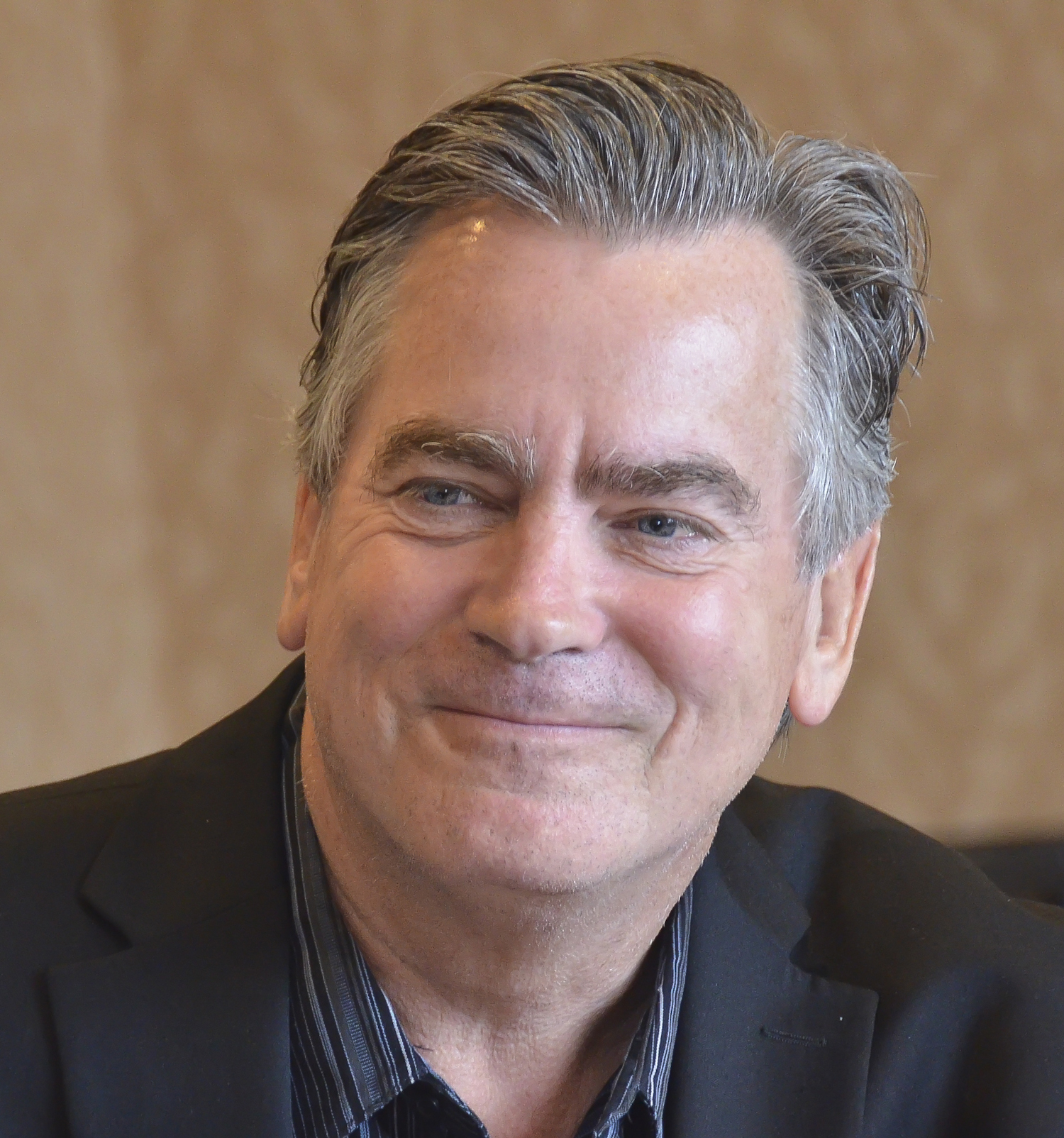 Jennings (EJ) Taylor is the Founder and Chief Technical Officer of Faraday Technology, Inc., a small business focused on developing innovative electrochemical processes and technologies based on pulse and pulse reverse electrolytic principles. EJ leads Faraday’s business, technology and commercialization strategy. In addition to 200+ technical publications and presentations, Taylor is an inventor on over 50 patents. He was part of the team that won the 2013 Presidential Green Chemistry Challenge awards for trivalent chromium plating’ and a finalist for the 2016 R&D 100 award for niobium electropolishing. Taylor has been a member of ECS for 42 years, is a Fellow of the ECS, Past Treasurer, and currently serves as Chair of the Interdisciplinary Science and Technology Subcommittee.
Jennings (EJ) Taylor is the Founder and Chief Technical Officer of Faraday Technology, Inc., a small business focused on developing innovative electrochemical processes and technologies based on pulse and pulse reverse electrolytic principles. EJ leads Faraday’s business, technology and commercialization strategy. In addition to 200+ technical publications and presentations, Taylor is an inventor on over 50 patents. He was part of the team that won the 2013 Presidential Green Chemistry Challenge awards for trivalent chromium plating’ and a finalist for the 2016 R&D 100 award for niobium electropolishing. Taylor has been a member of ECS for 42 years, is a Fellow of the ECS, Past Treasurer, and currently serves as Chair of the Interdisciplinary Science and Technology Subcommittee.
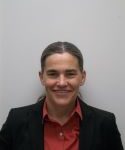 Maria Inman is the Research Director at Faraday Technology, Inc. where she manages the company’s pulse and pulse reverse research project portfolio. In addition to numerous technical publications and presentations, Inman is an inventor on many patents. She was part of the team that won the 2013 Presidential Green Chemistry Challenge awards for trivalent chromium plating, and a finalist for the 2016 R&D 100 award for niobium electropolishing. Inman has been an ECS member for over 25 years. In addition to organizing symposia at ECS meetings, Inman currently serves as Vice Chair of the ECS Industrial Electrochemistry and Electrochemical Engineering Division.
Maria Inman is the Research Director at Faraday Technology, Inc. where she manages the company’s pulse and pulse reverse research project portfolio. In addition to numerous technical publications and presentations, Inman is an inventor on many patents. She was part of the team that won the 2013 Presidential Green Chemistry Challenge awards for trivalent chromium plating, and a finalist for the 2016 R&D 100 award for niobium electropolishing. Inman has been an ECS member for over 25 years. In addition to organizing symposia at ECS meetings, Inman currently serves as Vice Chair of the ECS Industrial Electrochemistry and Electrochemical Engineering Division.

Stephen T. Snyder is the Lead Design Engineer at Faraday Technology, Inc. He received his BCE in Chemical Engineering from the University of Dayton, U.S., in 2001, his MS in Materials Engineering from Purdue University, U.S., in 2005, and his Drafting and Design Certification from Sinclair Community College, U.S., in 2012. Snyder leads the design function and manages the engineering and fabrication of prototype apparatuses for Faraday. He was part of a Faraday team selected for the 2013 Presidential Green Chemistry Challenge Award for trivalent chromium plating, and as a finalist for a 2016 R&D 100 Award for niobium surface finishing. Mr. Snyder has been a co-inventor to two patents and has contributed to work for numerous pending patent applications. He has been an ECS member since 2007.
Industrial Electrochemistry and Electrochemical Engineering Division New Electrochemical Technology (NET) Award
 Development and Commercialization of Rechargeable Zinc Manganese Alkaline Batteries to Enable a Sustainable Low-Carbon Energy Future
Development and Commercialization of Rechargeable Zinc Manganese Alkaline Batteries to Enable a Sustainable Low-Carbon Energy Future
Urban Electric Power
by Sanjoy Banerjee, Jinchao Huang and Gautam G. Yadav
Urban Electric Power (UEP) develops, manufactures, and markets zinc-manganese (ZnMnO2) batteries for grid-related energy storage applications.
Sanjoy Banerjee is CEO and Executive Chairman of Urban Electric Power (UEP) and the Director of the City University of New York (CUNY) Energy Institute where he also serves as Distinguished Professor of Chemical Engineering. Banerjee founded the Energy Institute on coming to CUNY in 2008, to develop sustainable energy technologies with low carbon footprints. Research in these areas, specifically modular and passively safe nuclear reactors, grid-scale electrochemical energy storage, and enhanced efficiency flow assurance for the oil-gas industry, has become internationally recognized. Prior to UEP and CUNY, Banerjee was Chair of the Chemical Engineering Department University of California, Santa Barbara; taught at UC Berkeley and McMaster University in Canada; and worked at Atomic Energy of Canada, ultimately as Acting Director of the Applied Science Division. For periods during his tenure at UC Santa Barbara, he was Mitsubishi Professor at the University of Tokyo, the Burgers Professor at TU Delft, and at ETH Zurich, where he continues to lecture every year. He has served on high-level advisory boards, notably, NASA Fluid Physics, the oil-industry Flow Assurance Consortium, and the Advisory Committee on Reactor Safeguards (ACRS), congressionally mandated to advise on nuclear facility licenses, where his last assignment was in the ACRS sign off for the nuclear engines in the Ford class aircraft carrier. Professor Banerjee’s work was recently been recognized by the 2019 ACS/EPA Green Chemistry Challenge Award (Academic) for development of rechargeable zinc-manganese dioxide batteries for grid applications, in collaboration with Urban Electric Power Inc., DOE Office of Electricity, and Sandia National Laboratories.
Jinchao Huang is the Director of Development at Urban Electric Power Inc. (UEP). She is responsible for research and development of high-capacity, rechargeable, and inexpensive zinc manganese dioxide batteries for home and commercial use. Prior to joining UEP, she completed her doctoral research in chemical engineering at the City College of New York with Prof. Sanjoy Banerjee, where she focused on the immobilization of zincate ions in secondary alkaline zinc batteries, and developed several innovative ionic selective separators for long-cycle high-energy-density zinc manganese dioxide batteries. She has co-authored 12 peer reviewed papers and more than 10 patents.
at Urban Electric Power Inc. (UEP). She is responsible for research and development of high-capacity, rechargeable, and inexpensive zinc manganese dioxide batteries for home and commercial use. Prior to joining UEP, she completed her doctoral research in chemical engineering at the City College of New York with Prof. Sanjoy Banerjee, where she focused on the immobilization of zincate ions in secondary alkaline zinc batteries, and developed several innovative ionic selective separators for long-cycle high-energy-density zinc manganese dioxide batteries. She has co-authored 12 peer reviewed papers and more than 10 patents.
 Gautam G. Yadav is a world-leading materials scientist and electrochemist, working as the Director of Advanced Battery Development at Urban Electric Power (UEP) in New York. He earned his doctoral degree in chemical engineering from Purdue University, where he specializes in synthesizing 1D complex metal oxide nanowires for thermoelectric applications and lithium-ion batteries. Prior to joining UEP, Dr. Yadav worked as a Senior Scientist at the CUNY Energy Institute, where he led the advancement of highly energy dense aqueous-based batteries based on manganese dioxide (MnO2) and zinc (Zn) as a replacement for expensive and dangerous Li-ion batteries for grid-storage applications. He is the primary lead inventor of the reversible second-electron MnO2 technology and the breakthrough high voltage (2.45-2.8V) ZnMnO2 battery, published in Nature Communications and ACS Energy Letters. He has authored 19 publications and filed over 26 patents on ZnMnO2 technology, licensed by UEP. At UEP, Dr. Yadav is leading a team of engineers and scientists to bring the second-electron MnO2 and high voltage (2.45-2.8V) ZnMnO2 battery to commercialization.
Gautam G. Yadav is a world-leading materials scientist and electrochemist, working as the Director of Advanced Battery Development at Urban Electric Power (UEP) in New York. He earned his doctoral degree in chemical engineering from Purdue University, where he specializes in synthesizing 1D complex metal oxide nanowires for thermoelectric applications and lithium-ion batteries. Prior to joining UEP, Dr. Yadav worked as a Senior Scientist at the CUNY Energy Institute, where he led the advancement of highly energy dense aqueous-based batteries based on manganese dioxide (MnO2) and zinc (Zn) as a replacement for expensive and dangerous Li-ion batteries for grid-storage applications. He is the primary lead inventor of the reversible second-electron MnO2 technology and the breakthrough high voltage (2.45-2.8V) ZnMnO2 battery, published in Nature Communications and ACS Energy Letters. He has authored 19 publications and filed over 26 patents on ZnMnO2 technology, licensed by UEP. At UEP, Dr. Yadav is leading a team of engineers and scientists to bring the second-electron MnO2 and high voltage (2.45-2.8V) ZnMnO2 battery to commercialization.
Physical and Analytical Electrochemistry Division Max Bredig Award in Molten Salt and Ionic Liquid Chemistry
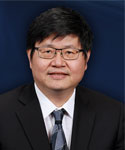 Electrochemical Graphitization via Molten Salts
Electrochemical Graphitization via Molten Salts
by Sheng Dai, Oak Ridge National Laboratory
Sheng Dai is currently a Group Leader in the Chemical Sciences Division of the Oak Ridge National Laboratory (ORNL), Professor of Chemistry at the University of Tennessee, Knoxville (UTK), U.S., and serves as a Director for the Energy Frontier Research Center (EFRC) for Fluid Interface Reactions, Structures and Transport (FIRST). Professor Dai obtained his BS (1984) and MS (1986) in Chemistry at Zhejiang University, China, and his PhD (1990) in Chemistry at UTK. He was named UT-Battelle Corporate Fellow in 2011, the highest designation a researcher can receive at ORNL. Dr. Dai’s current research interests include ionic liquids, porous materials, and their applications for separation sciences and energy storage as well as catalysis by nanomaterials. His research has garnered awards including the 2019 ACS Award in Separation Science and Technology; 2018 IMMA Award of the International Mesostructured Materials Association; 2016 Battelle Distinguished Inventor Award; and six R&D100 Awards (2011, 2012, two in 2014, 2015, and 2016). He is a Fellow of the Material Research Society and Fellow of the American Association for the Advancement of Science.
Sensor Division Outstanding Achievement Award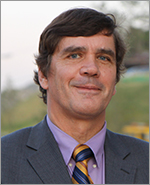
Controlling Carbon Shape and Microstructure for Suspended Wires, Mats, Interdigitated Arrays and Origami
by Marc Madou, University of California, Irvine
Marc Madou is the Chancellor’s Professor of Mechanical and Aerospace Engineering at the University of California, Irvine (UCI), with joint appointments in the departments of Biomedical Engineering, and Chemical and Biomolecular Engineering. He specializes in the application of miniaturization technology to chemical and biological problems (BIO-MEMS).
Madou completed his BS (1973), MS (1975), and PhD (1978) at the Rijksuniversiteit Ghent. Before joining UCI in 2002, he was Vice President of Advanced Technology at Nanogen (2001-2002). Madou was the founder of SRI International’s Microsensor Department; founder and President of Teknekron Sensor Development Corporation; Visiting Miller Professor at the University of California, Berkeley; and Endowed Chair at Ohio State University. He is the author of several books in this burgeoning field he helped pioneer in academia and industry. Fundamentals of Microfabrication, an introduction to MEMS and NEMS, is known as the “bible” of micromachining. He founded several micromachining companies and has been on the board of many others. Many of his students became well known in their own right in academia and through successful MEMS start-ups. Today, Madou works with research teams in India (IIT Kharagpur), Mexico (Tec de Monterrey and UNAM), Malaysia (UM) and Germany (KIT). In the recent past, he also worked on large projects with teams in South Korea and Canada.
He is considered the pioneer of two research fields that are now being pursued worldwide: carbon micro- and nanofabrication and compact disc fluidics for molecular diagnostics. These two technologies have resulted in at least 10 start-up companies. From those founded by Madou, the lithium-ion battery company Enevate is the largest and best known. Madou has an h-index of 79.
Sensor Division Outstanding Achievement Award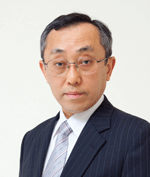
Development of Gas Sensors for Safety and Health by Employing Various Sensor Technology
by Yasuhiro Shimizu, Nagasaki University
Yasuhiro Shimizu is Professor and Dean of the Graduate School of Engineering at Nagasaki University. His research has focused on chemical sensors including various kinds of gas sensors capable of detecting humidity, oxygen, VOCs, and odors, by employing several detection principles. Most recently, his work has been directed at developing gas sensors for use in safety and health care.
Shimizu received his PhD in Engineering in 1987 from Kyushu University after completing his BS in Applied Chemistry there in 1980. He joined the faculty of Nagasaki University in 2005. His scientific contributions and service to The Electrochemical Society of Japan (ECSJ) was recognized with his appointment as a Fellow in 2020. Other awards include the 2008 ECSJ Scientific Achievement Award; 2001 Seiyama Award of the Japan Association of Chemical Sensors (JACS); 2001 and 2005 ECSJ Distinguished Paper Awards; and 1992 ECSJ Sano Award for a young distinguished researcher. He has been Chair of the Asia/Pacific Region in the Executive Steering Committee of the International Meeting on Chemical Sensors since 2016, and Chair of the International Steering Committee of the Asian Conference on Chemical Sensors since 2017, and served as President of the Japan Association of Chemical Sensors (JACS), an expert division of ECSJ in 2015 and 2016; Editor of Sensors and Actuators B: Chemical (January 2008 to June 2018), and Co-Editor in Chief of Sensors and Actuators B: Chemical since July 2018. The latest record of his scientific achievements can be seen on the ORCID website (https://orcid.org/0000-0002-1973-4392).







